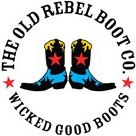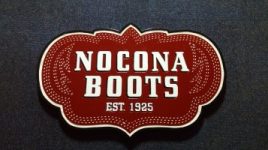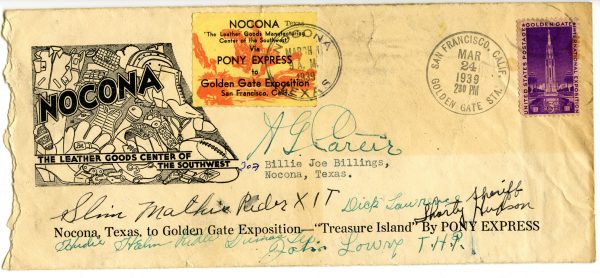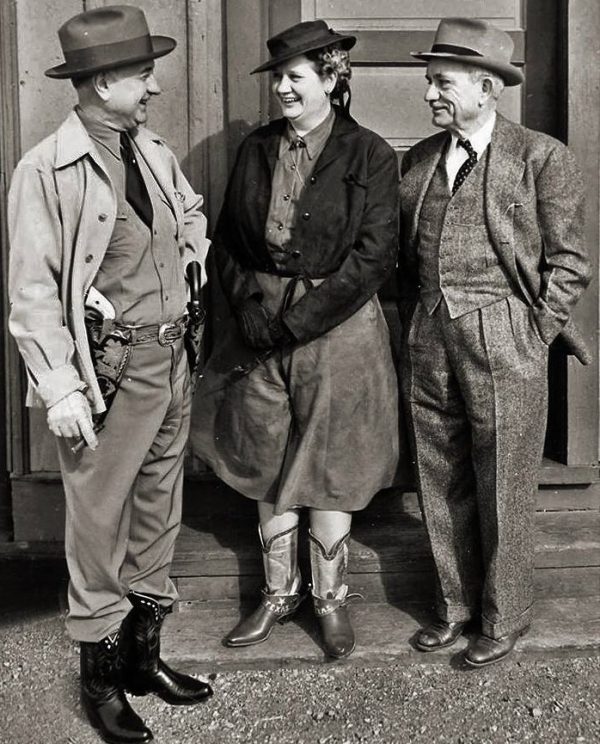
NOCONA AND THE UNSTOPPABLE MISS ENID
“Enid Justin started her career by stepping into a man’s shoes.Now thousands of men are stepping into hers.”― Fort Worth Star Telegram, July 18, 1968
Nocona has been putting the “do it like a boss” Texas swagger in boots since 1925, when Miss Enid Justin founded Nocona Boots in Nocona, Texas. A feminist before there was feminism, a maverick visionary with unstoppable determination and a passion for boot making, Miss Enid raised the bar for quality in the boot trade – strictly a man’s game before the meteoric rise of Miss Enid and Nocona Boots.
Born into boots, Enid Justin was the daughter of “Daddy Joe” Justin, the founder of Justin Boots. Suspended from eight grade for dancing on a Sunday at her brother’s birthday party at her family’s home, she walked out of school never to return. As Miss Enid was proud of saying, “I danced my way out of school.” Miss Enid then started working full time in her father’s shop stitching boot tops, shipping out boots to customers, and learning the craft of bootmaking and the details of running a business from her father.
After his death in 1918, her brothers decided to move the boot business to Fort Worth. Miss Enid felt so strongly that her father had wanted Justin Boots to stay in Nocona, that she and her husband Julius Stelzer stayed in Nocona when her brothers moved – with all the factory’s equipment – in 1925.
Miss Enid borrowed $5,000 and kept seven employees to found the Nocona Boots brand in Nocona, Texas.
And soon became Justin’s biggest competitor and her brothers’ biggest headache.
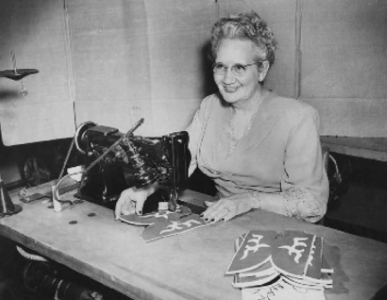
During those first years, Miss Enid worked every possible position in the factory, from outside sales to stitching boots. She also ordered and delivered coal, made lunches for the oilfield workers, and rented rooms in her home to make ends meet while she grew the business. The company’s first salesperson, Miss Enid hit the road, bouncing along dirt roads from one small Texas town to another, her Model T filled with boots. Net profits rose from $1,180 in 1926 to $14,998 in 1929, largely due to those West and Central Texas road trips.
Despite the financial drain of equipment purchases and local prejudice against buying boots made by a woman, the business began to prosper when, in 1926, the oil boom near Nocona brought a tidal wave of new customers to Miss Enid’s young company. The brand made a 16-inch lace-up boot that was tough enough to survive the oil fields, and the wildcatters kept coming back for more.
In 1934, Miss Enid’s husband fell for a woman at the boot factory. He divorced Miss Enid and started the equally famous Olsen-Stelzer Boot and Saddlery Company in Henrietta. Miss Enid set her chin a smidgen higher and carried on building the business – perhaps her one true love after all.
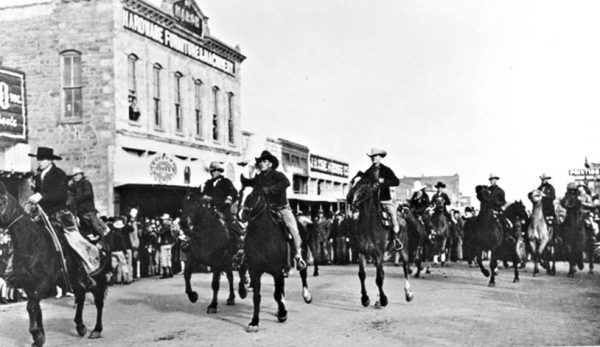
Start of the Pony Express race in Nocona
The Pony Express Rides Again. Never afraid to take a risk and ready to prove her reputation as a quality bootmaker, the unstoppable Miss Enid pulled off an audacious publicity stunt that made Nocona and Miss Enid household names across the nation: she sponsored a re-enactment of the Pony Express from Nocona to the World’s Fair in San Francisco in 1939. The route followed the old Overland Mail Trail established in 1839, entering Texas at Colbert’s Ferry in Oklahoma and stretching west through Gainesville on to El Paso, Tucson, Phoenix, Yuma and Los Angeles and then up the Pacific Coast to San Francisco. The trip, from start to finish, was approximately 2000 miles. Each rider was to carry U.S. regulation mail pouches, picking up mail along the route. Specialty envelopes and Pony Express stamps were produced. Upon reaching the World’s Fair the mail was postmarked and sent to the addressee. Forty-two individuals from twenty-six states originally signed up to participate. The send off for the race was a huge celebration, with an estimated 10,000 people attending. Speeches were made, bands played and Miss Enid cut the starting line ribbon.
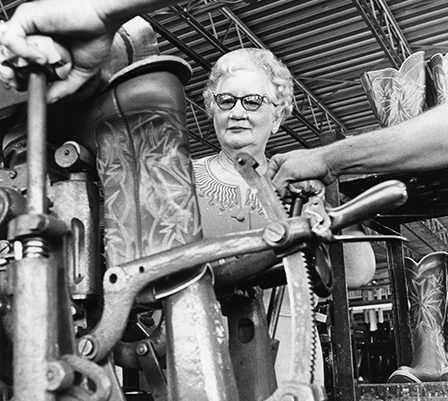
Large numbers of well wishers met the racers in each town, often accompanied by marching bands and other forms of entertainment. Some towns handed out cash prizes to the first rider to reach their spot on the map. The riders picked up more mail at each town. They battled their way through blinding sand storms, rain and cold temperatures, each determined to be the first to reach the Golden Gate destination. Some even rigged tail lights on their saddles in order to ride safely late into the night, and rode several legs of the race bareback to spare their horses the extra strain and wear of a saddle. Twenty four days after the start, a twenty-two year old cowpoke from Matador, Texas crossed the finish line, with Miss Enid there in San Francisco to deliver the 750 silver dollar prize money.
Miss Enid’s work ethic never faltered. Even in old age, Miss Enid kept a strict routine, waking up at 5 a.m. and driving her white Fleetwood Cadillac with custom plates, “EJ Boot,” to the office. She was beloved in Nocona – thrilling the kids in town by handing out crackerjacks on Halloween, and ensuring that the poorer kids in town quietly had new boots by the second or third day of school.
In 1981 Nocona Boots merged with Justin Industries, then the parent company of Justin Boots, bringing the boot-making histories of the two family companies full circle. Both are now owned by Warren Buffet’s Berkshire-Hathaway. Nocona boots are still crafted in the spirit of the fearless Miss Enid’s philosophy that “life is meant to be lived, and not in the shadows”.
